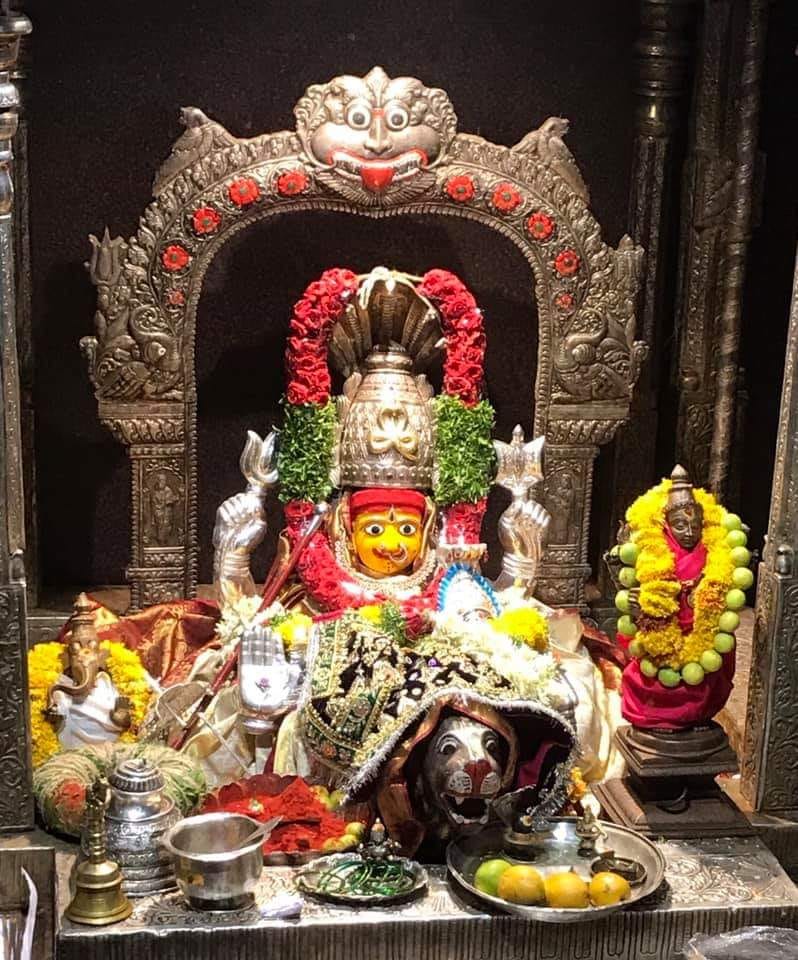Hyderabad is a city with rich history and culture. Here’s a thread on the etymology of some of Hyderabad's most popular localities:
1. Abids: Named after Albert Abid, a Jewish merchant who settled in the state of Hyderabad in the 19th century.
1. Abids: Named after Albert Abid, a Jewish merchant who settled in the state of Hyderabad in the 19th century.

2. Banjara Hills: After Banjaras, its original inhabitants. The word Banjara is derived from Sanskrit “van-chara,” meaning “forest wanderers.” The community is also known as Lambadi/Lambani/Lamani as they were lavani "salt" traders. 

3. Barkas: A corrupted form of "Barracks", as the area was once home to the military barracks of the Nizam.
4. Begumpet: This was a jagir belonging to Jahandar un-nisa Begum - the daughter of 5th Nizam. It was gifted to her as Paan Daan Ka Kharch (pin money) by her husband Sir Viqar ul-Umra, a Paigah nobleman. She donated a huge piece of land from her estate to the Hyd Public School. 

5. Afzal Gunj: Named after Afzal ad-Dawlah, the fifth Nizam of Hyderabad. He gifted the land to grain merchants for trade and commerce. Hence Gunj, meaning “market.” 

6. Begum Bazar: After Humda Begum, the wife of Nizam Ali Khan, also known as Asaf Jah II / 2nd Nizam. She gifted the area to the merchants. 

7. Falaknuma: Literally "mirror of the sky" in Urdu. The area is named after the “heaven-like” Falaknuma Palace, which is now a high-end hotel. 

8. Koti: Literally 'palace' in Urdu, Koti derives its name from the Residency Palace built by James Kirkpatrick, a British Resident in the princely state of Hyderabad. The building currently houses the University College for Women (also known as Koti Women's College) 

9. Chaderghat: Literally “white sheet” in Urdu. It's so named because the Musi river flowing here formed a Chader, or a sheet of water. 

10. Dar-ul-Shifa: Literally "House of Healing" in Urdu. It’s named after a once-venerable institution, built by Sultan Mohammed Quli Qutb Shah in the 1590s. Serving as Hyderabad's first hospital, it stood as a symbol of care and compassion. It’s not a functional hospital anymore. 

11. Dabeerpura: Literally "colony of scholars." It’s said the area was once home to a number of scholars and writers. Dabeerpura has one of the 13 darwazas that served as an entrance to the palace of the Nizam. 

12. Asmangarh: Literally “fort of the sky,” after a palace built on a hillock in this area by the Paigah Noble Sir Asman Jah. The palace served as a hunting preserve for the Nizam. Controversy and encroachment have been gripping this structure for years. 

13. Musarambagh: After Michel Joachim Marie Raymond (also known as Monsieur Raymond), who served as an army general under Nizam Ali Khan - the Asaf Jah II. Since locals had challenge pronouncing his French name, the name Monsieur Raymond got corrupted to MusaRam.




14. Saidabad: Named after Syed Mir Mommin, a Persian who held the position of a Peshwa (prime minister) of Golconda during the Qutb Shahi rule. A powerful and influential figure, his legacy can still be seen in the city. Saidabad is one of the key locations for Sadar in Hyderabad 

15. Malakpet: After Malik Yakoob, a servant of the Golconda ruler, Abdullah Qutub Shah. Malik’s historical presence in this area left an enduring legacy, with his very own market thriving here. (Pic: Hyderabad Race Club, Malakpet) 

16. Hayathnagar: After Hayat Bakshi Begum, the daughter of Mohammed Quli Qutub Shah, the fifth Sultan of the Qutb Shahi dynasty and the founder of Hyderabad. (Pic: Tomb of Hayat Bakshi Begum in the Qutb Shahi Tombs complex near Golconda.) 

17. Attapur: After Attaullah Khan, a noble during the reign of the Nizams. (Pic: P V Narasimha Rao Expressway, which passes through Attapur) 

18. Mehdipatnam: After Syed Mohammed Mehdi (aka Mehdi Nawaz Jung), a politician and bureaucrat of Hyderabad State. He was the first municipal commissioner of Hyderabad. 

19. Masabtank: From Talab-e-Maa-Sahiba, which became Masab Tank in the course of time. Maa-Sahiba was a title bestowed on Hayat Bakshi Begum, wife of Muhammad Qutb Shah – the 6th ruler of Golconda. There was a talab (tank), which became popular after her name, hence the name. 

20. Punjagutta: From a local pahad (hillock), which is said to be bearing the palm (punja) and knee (ghutna) impressions of Hazrat Ali. Punja-ghutna became Punjagutta / Panjagutta in the course of time. 

21. Khairatabad: After Khair-un-Nissa, the daughter of a Hyderabadi nobleman. The book 'White Mughals' by @DalrympleWill chronicles the passionate love story between Khair-un-Nissa and James Achilles Kirkpatrick, the British Resident who served as a diplomat at Hyderabad. 

22. Lakdi-ka-pul: Meaning ‘wooden bridge,’ this place derives its name from a large bridge constructed with wooden beams during the reign of the sixth Nizam. It was needed to cross the railway line that passed through the area. Pic: Model of the wooden bridge inaugurated in 2019. 

• • •
Missing some Tweet in this thread? You can try to
force a refresh

 Read on Twitter
Read on Twitter




























